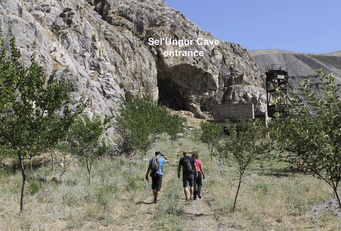G. Brancaleoni, S. V. Shnaider, M. Blinnikov, K. Boxleitner, S. M. Mentzer, V. Alekseitseva, S. V. Zhilich, T. Chargynov, S. Alisher kyzy, E. V. Parkhomchuk, R. Spengler, B. Viola, A. I. Krivoshapkin, M. T. Krajcarz (2025)
Inner Asian Agropastoralism Within the Mongol Empire: Multi-Proxy Investigations at Sel’Ungur Cave, Kyrgyzstan.” Geoarchaeology 40: 1– 29. https://doi.org/10.1002/gea.70032.
Greta Brancaleoni worked in Tübingen as a GACT visiting researcher together with GACT member Susan Mentzer. The publication on a part of their results has recently been relased.
The study investigates the Sel’Ungur Cave in Kyrgyzstan, one of Central Asia’s most important archaeological sites, to better understand past agropastoral lifeways. Using multiple analytical methods—such as dating, phytoliths, carpology, fecal spherulites, and micromorphology—the researchers identified layers of ash and dung formed by repeated animal penning and burning. These findings reveal that the cave was used as livestock shelter between the 12th and 15th centuries. Evidence from plant remains shows that herds mainly grazed locally, while small amounts of cultivated crops and fruits suggest limited agricultural supplementation. Overall, the results point to a flexible mixed economy combining transhumance and agropastoralism adapted to Central Asia’s complex environments.
The interdisciplinary nature of this study perfectly reflects what we aim to foster within GACT.
